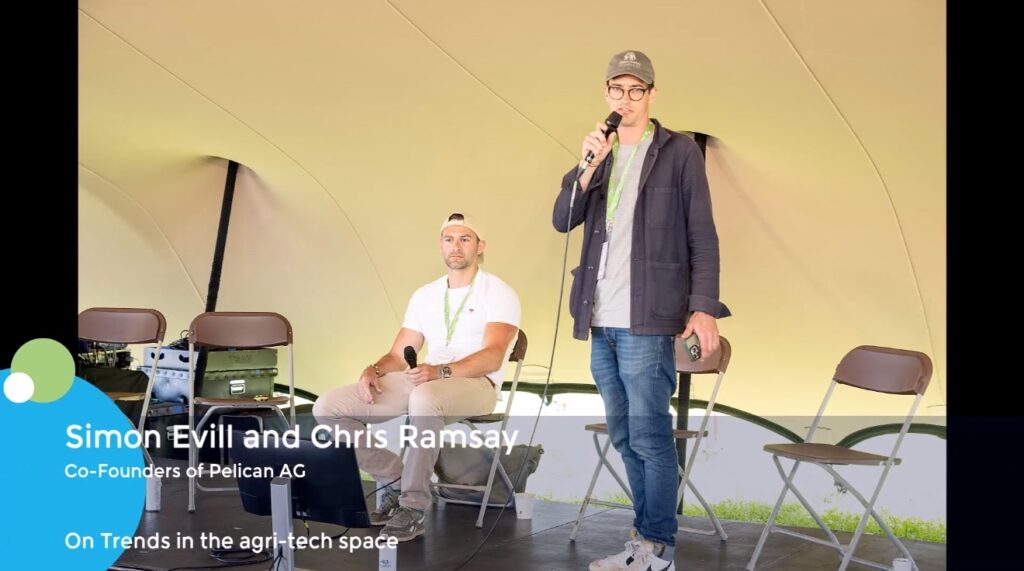Energy transition GPs cool on early stage, heat up on thermal plays
- Scaling back exposure to early- and mid-stage projects
- Targeting niche plays in gas capture and distributed energy
- Leveraging energy transition branding to pursue thermal assets
The US renewable energy sector is undergoing a rapid transformation, and financial sponsors are amending their investment strategies accordingly.
Rising interconnection costs, supply chain bottlenecks, and a reduction in government support and funding has forced GPs to become more rigorous in their assessment of opportunities, prioritizing late-stage projects and niche subsectors. Larger players, meanwhile, are diversifying into the electrification of artificial intelligence (AI) infrastructure, according to industry participants.
The “gold rush” – when sponsors would invest in almost any renewable energy project that crossed their desks – is over, said Mark Philpot, co-founder and director of market strategy at boutique renewable energy advisory firm Blended Power.
There have been nine private equity buyouts in the US renewable sector year to date with a combined deal value of USD 5.6bn. This compares to USD 6.6bn across 12 deals in the same period in 2024, according to Mergermarket data.
Dan O’Donnell, a managing director in Houlihan Lokey’s financial and valuation advisory energy and infrastructure practice, observed that sponsors are pulling back from early-to-mid-stage projects, which has led to a drop in valuations. Projects at this stage face significant cash burdens and heightened EBITDA loss risks due to rising interconnection fees and engineering, procurement and construction costs.
Interconnection costs, for example, used to be less than USD 0.10 per watt, compared with an average USD 0.60 per watt for the Midcontinent Independent System Operator (MISO) electricity market, Philpot said.
Investment data may already reflect this change in appetite. Even though buyouts are down year to date in terms of deal volume and deal count, average transaction size is up 13.6%. This suggests sponsors are going after larger projects, which tend to be closer to commercial operation.
O’Donnell predicts that newer developers with portfolios mostly consisting of early-to-mid-stage projects are going to struggle to survive. “You’re not going to hear about it because it was an idea on a spreadsheet or piece of paper,” he added.
Even survivors will see their IRRs take a hit, which might prompt some to pivot away from renewables. The situation is comparable to the oil and gas space post-2020 when GPs pulled out – and more than 100 companies went bankrupt – following a collapse in crude prices and COVID-19 demand shocks, said Archie Fallon, partner in Willkie’s corporate and financial services department.
“It does shrink the population of PE groups that want to invest into [the renewables] industry,” he observed. “The industry could potentially become more niche.”
Unlike in oil and gas, where sponsors like EnCap Investments have raised over 10 dedicated funds, GPs lack a comparable track record in renewables. Renewables-focused GPs Quinbrook Infrastructure Partners and LS Power, for example, have each raised five dedicated funds to date.
Nooks and crannies
The onus is now on GPs to develop differentiated strategies. O’Donnell describes it as finding “little nooks and crannies” in the market that are not over-invested. For Cresta Fund Management, that means targeting alternative fuel and gas capture investment opportunities.
The sponsor holds interests in Lapis Carbon Solutions, which develops, builds, and operates carbon capture, utilization, and storage (CCUS) projects; Ocean Pacific, a supplier of renewable natural gas used to power fleets of buses, trucks, and other vehicles on the West Coast; and Braya Renewable Fuels, which makes renewable diesel that can be converted to sustainable aviation fuel.
“We’re excited about the strategy as energy transition is really just warming up. My view is that the next seven or eight years is probably a period of high growth, irrespective of who we have as an administration,” Chris Rozzell, a co-founder and managing partner at Cresta, told this news service in July.
Houston-based Pierview Capital, a newly formed energy and infrastructure specialist, has settled on distributed energy – electricity generation and storage that occurs close to the point of use – as its niche. The firm’s debut fund, currently in market, is expected to focus on projects targeting grid congestion where power delivery is constrained.
“Renewables, whether its wind or solar, tend to be built out in areas where there’s a lot of land [but where] you need significant infrastructure to get that renewable power to market,” said Jake Field, Pierview’s CEO and managing partner.
The sweet spot is projects with under 10 megawatts of capacity. These may include behind-the-meter projects, where the assets are located on the customer’s side of the utility meter, developed by Findlay, Ohio-based One Power, Field explained.
Liquified natural gas (LNG) is also on the agenda, accessed through investments in micro-LNG plants built and operated by OneLng and in VP Ventures, which specializes in delivering short-term – under 24 months – LNG supply for 2 MW-10 MW power solutions. Both companies are based in Houston.
Others are diversifying into new geographies. Libra Group’s Greenwood Sustainable Infrastructure (GSI), for example, is bolstering its Canadian portfolio to balance near-term uncertainty in the US renewables sector, Camilo Patrignani, Libra’s head of infrastructure, told this news service.
“With the passage of the Big Beautiful Bill, we’re accelerating that strategy and seeing strong interest from both investors and lenders in supporting our growth in Canada,” he said.
New York City-based GSI on 9 September announced the acquisition of the 556 megawatts district current (MWdc) Homestead Solar project in Alberta, Canada, from Kiwetinohk Energy for an undisclosed amount.
Whatever a sponsor’s path towards differentiation, it is likely to be welcomed by LPs that appear to be increasingly interested in specialist offerings. “They are not looking for broad products. They are looking for managers that have a specific expertise and specific niche,” said James Wang, CIO and managing partner of Pierview.
Green to steam
Another subset of sustainability-focused sponsors with track records of investing in renewable power are shifting their attention to thermal assets. Private equity buyout volume in the electric power sector is USD 24.1bn year to date, up from just USD 8.9bn in the same period in 2024, according to Mergermarket data.
Heavyweight sponsors, in particular, are starting to invest in regulated utilities essential to the powering of AI infrastructure. Investment patterns reflect those in the global data center space, where Morgan Stanley projects that spending will reach USD 2.9trn by 2028, with USD 1.3trn of that going into infrastructure.
“[Historically, regulated utilities haven’t been that interesting to PE firms, but with renewables becoming harder, you have to go somewhere else in the power industry … and so utilities is kind of the obvious one,” said Blended Power’s Philpot.
In May, Allete – parent company of Minnesota Power, which serves about 150,000 customers in northeastern Minnesota – announced an agreement that will see it sold to a partnership led by Canada Pension Plan Investment Board (CPPIB) and BlackRock subsidiary Global Infrastructure Partners (GIP). The deal values the business at USD 5.9bn including debt.
Later the same month, Blackstone Infrastructure Partners disclosed its agreed acquisition of TXNM Energy, a regulated utility operating in New Mexico and Texas, for about USD 5.7bn. Then in August Duke Energy said it would sell a 19.7% stake in Duke Energy Florida, which serves about 2m customers, for USD 6bn.
By acquiring or investing in regulated utilities, GPs also hope to secure power supply for their own data center portfolios, Philpot said.
Blackstone has the largest and fastest-growing data center platform globally, valued at USD 85bn, the firm claims on its website. Properties include Overland Park, Kansas-based QTS Realty Trust, acquired for USD 8bn in 2021, and stakes in Legence, Shermco Industries, and Copeland. It also has data center development joint ventures with Digital Realty and Corporate Office Properties Trust.
Coal’s a goal
Such is the demand for power, some sponsors are even considering coal-fired power plant projects. These would have been entirely out of scope just a few years ago, yet Willkie’s Fallon observed that deals are happening under ‘energy transition’ branding. Houlihan Lokey’s O’Donnell added that coal opportunities may emerge in conjunction with larger natural gas power plant portfolios.
Since some LPs remain barred from investing in coal assets, O’Donnell recommends GPs carve out those holdings into continuation vehicles or similar structures. “It allows a select group of LPs that have the appetite to participate, whereas the LPs that are restricted or don’t have the appetite, don’t have to participate,” he said.
The primary concern, however, is that sponsors are entering the thermal generation space at peak or near peak valuations. The average size of private equity buyouts in the electric power sector is USD 1.2bn year to date, nearly four times the 2024 average, according to Mergermarket data.
Elevated pricing is partly a function of increased competition. Technology giants, which want to lock down power supplies to support their own AI buildouts could be vying with private equity for the same thermal assets.
One listed enterprise software firm, for example, is negotiating a power purchase agreement with a regulated utility in North-Central US and has proposed backstopping a new generation project to offset its electricity use, according to a source familiar with the situation. In effect, tech giants are now helping fund power infrastructure.
Another issue, raised by Philpot, is that investments in regulated utilities could eventually lead to higher regulated electricity rates. In a 15 July report, an administrative law judge urged Minnesota Public Utilities Commission to reject Allete’s proposed sale to CPPIB and GIP, citing risks to ratepayers as well as the company’s energy transition trajectory and long-term financial health.
A regulated utility looking to increase rates must file a formal application, known as a rate case, with a state of provincial utility commission. The latter determines whether the proposed rates are reasonable, and it may reject the application or call for modifications.
Despite the growing scrutiny over private equity’s growing footprint in regulated utilities, the broader investment narrative is shifting. Rising electricity demand has brought the realities of grid capacity and reliability into sharper focus, causing a recalibration of stakeholder expectations around capital structures and the energy mix. Even capital allocators are becoming more pragmatic.
“I think LPs have come to terms that this grid is going to require a diverse set of solutions, and it’s okay to burn a little bit of fuel knowing that we’re also making investments in renewables,” O’Donnell said.










